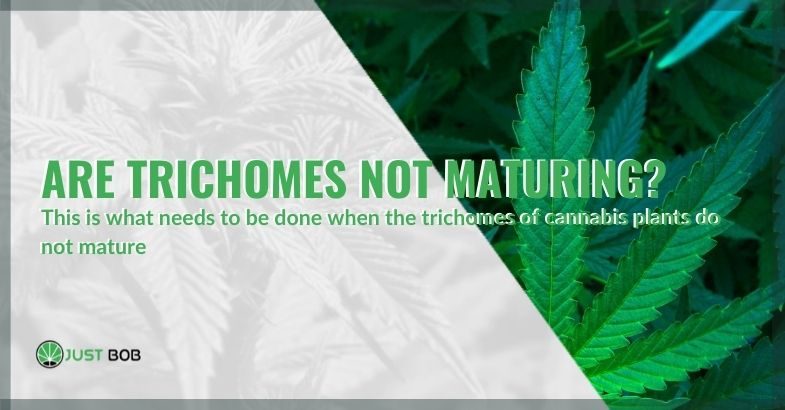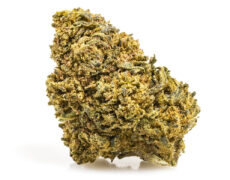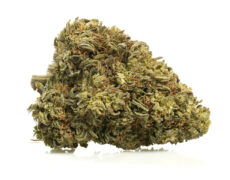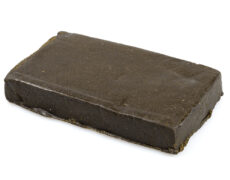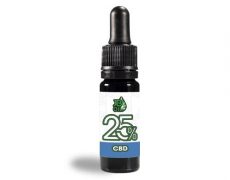Modified on: 12/09/2023
What should be done when the trichomes of cannabis plants do not ripen? Here is what cannabis growers do to identify problems and solve them
Hemp growers know how much work goes into a marijuana plant, from planted seeds to the flowering period. So, to avoid harvesting at the wrong time, they monitor the maturity of the trichomes.
Based on the coloration of these exceptional mushroom-headed filaments, it is possible to tell when the buds are ready for harvest because each characteristic corresponds to a different production of different cannabinoids (CBD, CBN, etc.).
What if the trichomes don’t ripen?
It can also happen, but it could be a sign that something is wrong with the legal hemp plant.
Here we explain how hemp growers identify the trigger and how they act to save the crop.
Trichomes: this is what happens in the hemp plant under normal conditions.
Before explaining what happens when trichomes do not mature in a light cannabis plant, it would be good to specify what happens under normal conditions.
First, if you wonder how to look at the trichomes, the answer is that you need a magnifying glass or, to examine them even more specifically, a microscope with a magnification ranging from 10X to 100X.
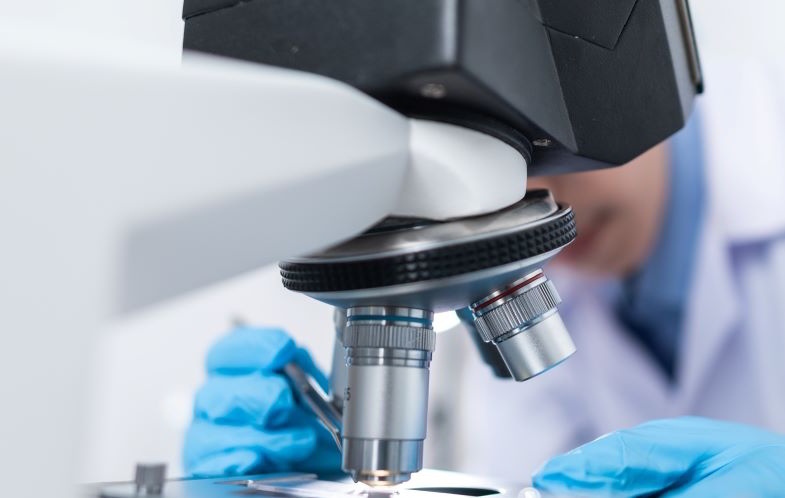

When a light hemp plant usually matures, the trichomes gradually change from transparent to opaque/ milky to amber.
If the plant’s inflorescences and smaller leaves (sugar leaves) are covered in transparent trichomes, the time for harvesting is still far off. In contrast, it is almost time to proceed if the trichomes are almost entirely opaque and milky.
Although differences depend on the variety, you grow.
Hemp growers who (outside our country) grow illegal weed and want to obtain a crop with high THC levels should not wait until all the trichomes have turned amber. It is crucial, as this substance is concentrated in more significant quantities when the trichomes are opaque or mixed, while the percentages of other less ‘exciting’ cannabinoids increase later.
That said, there are many varieties of legal weed in which when the trichomes have a milky, opaque appearance, the cannabinoid present in the highest concentrations is cannabidiol (CBD).
So, it all depends on the variety you grow.
Every cannabis grower knows which species of cannabis CBD he is dealing with, so he knows very well what to expect from the trichomes before harvest from one stage to the next.
When trichomes do not ripen: causes and remedies
When the trichomes of the inflorescences and leaves of hemp plants do not ripen, there is something wrong.
It is likely that the plant can no longer develop and mature and that its growth is somehow ‘stunted’. However, it is also visible in the still white pistils, which, just like the maturing trichomes, should gradually turn amber.
There could be only one or two causes or several triggering factors, which can also change depending on the type of crop (indoor, outdoor, hydroponics, etc.).
To understand why amber trichomes take so long to appear, canapiculturists mainly examine 5 parameters:
- light;
- water;
- heat;
- excess foliage;
- nutrients.
First, it is essential to ask yourself whether the legal marijuana plants you are growing are adequately lit because the light is necessary for plant development.
If the hours or intensity of light are insufficient for the plant to grow, it is essential to remedy this immediately.
In outdoor cultivation, it is good to move the plants to a brighter place, while in indoor cultivation, it is good to avoid too much crowding and ensure that the plants can absorb light over their entire surface. In this case, it is better to prefer orange or red wavelengths (580 – 700 nm), which are the best for stimulating flower maturation.
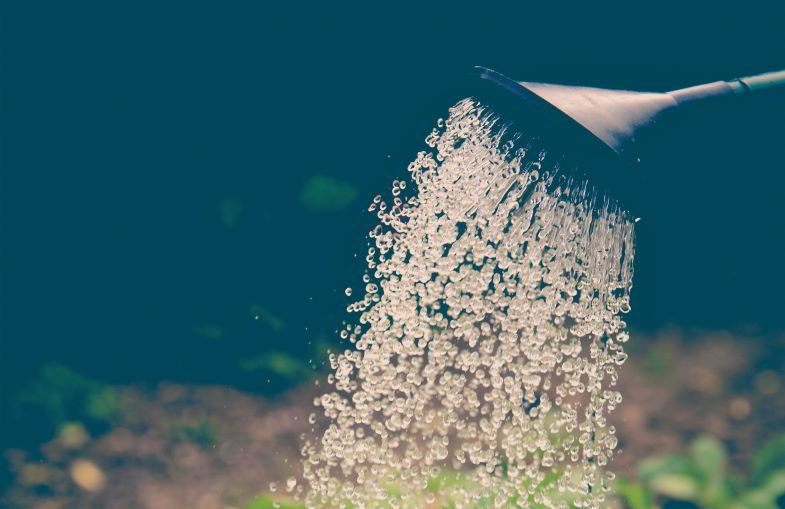

As far as water is concerned, the roots are usually washed during the flowering phase, but if this is overdone, it can affect the development of the plant.
To speed up trichome ripening, some canapiculturists stop watering the plants to get into a state of “stress” and tend to produce more resin and ripen faster. For the same reason, they temporarily change the temperature (but always between 21-26°).
An interference with trichome maturation could also be the lack of defoliation in the pre-flowering phase.
If the CBD flowers plants are full of unnecessary leaves at the bottom of the plant, these will eventually suck the energy that the flowers need to develop at their best. It is better to leave only the umbrella leaves, which help nourish the plant itself.
And what about nutrients?
During the flowering phase, the supply of nutrients to the plant is usually suspended. The reason for this is that fertilizers could accumulate, causing unpleasant aromas to persist even after harvesting.
If the hemp plants are not growing and all other parameters are regular, they likely had a nutritional deficiency beforehand. So, it may make sense to feed them with a suitable supplement for the flowering phase (preferably a non-chemical one) so that the plant can resume its maturation cycle and finally make it to harvest time.
By looking for the causes of these triggering factors and remedying them, you can generally see the plant recover, unless affected by a disease or pest. Then, after a while, you will be able to see the pistils and trichomes ready for harvesting, characterized by a beautiful mixed white and amber coloration.
Read also: Hemp fuel: is it a real option for the future of the green economy?
To conclude
As you may have read, cannabis growers can run into several problems when cultivating CBD weed plants, but these can be easily solved if recognized in time.
After this in-depth information, we are reminding you that the cultivation and consumption of legal hemp are not allowed in the UK. However, if you are a collector of products derived from this plant, we invite you to take a look at our JustBob store.
Choose from inflorescences, CBD oil and legal hash and complete your collection with the best products at the most competitive prices.
We look forward to seeing you in our CBD flower shop!
See you soon!

